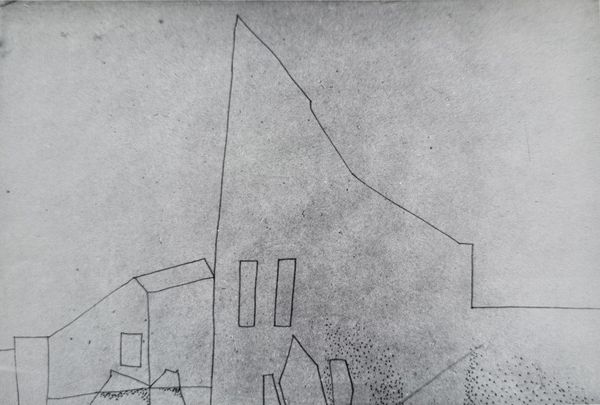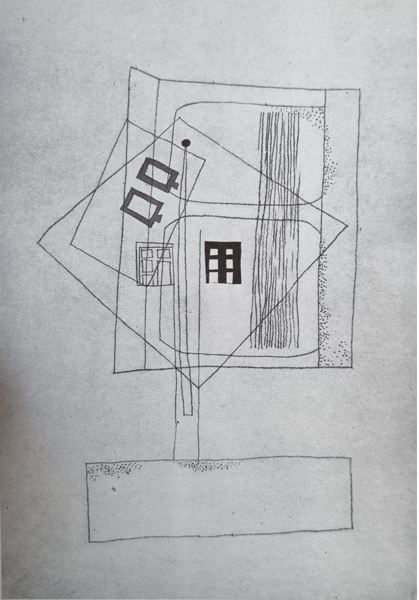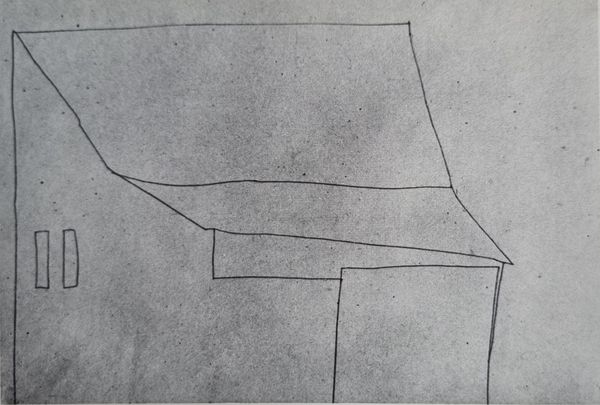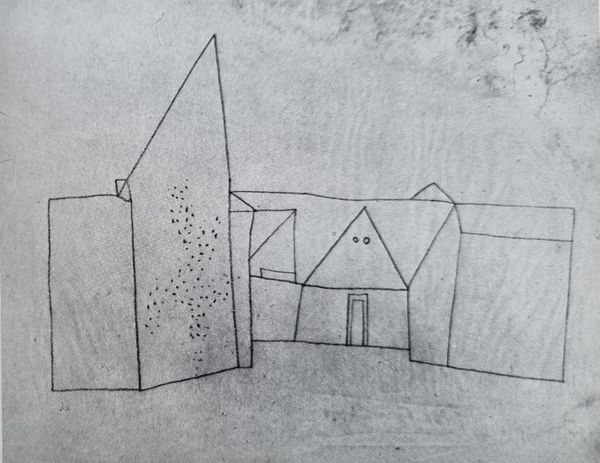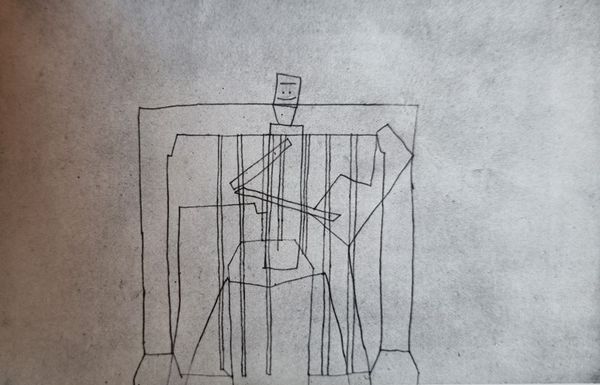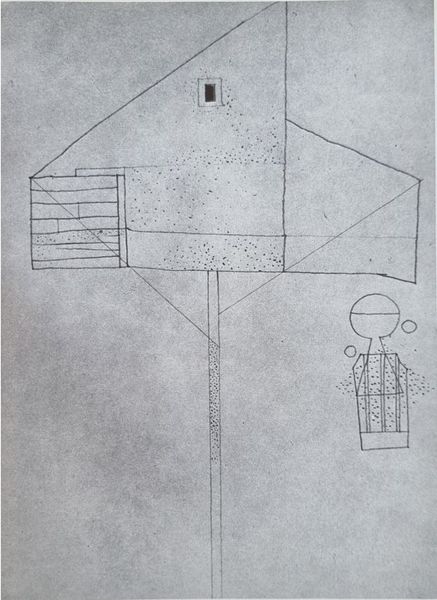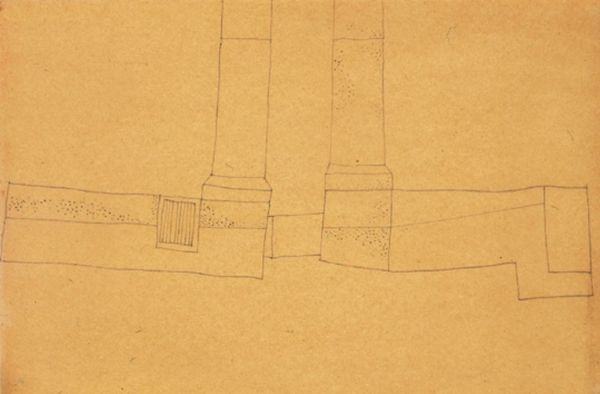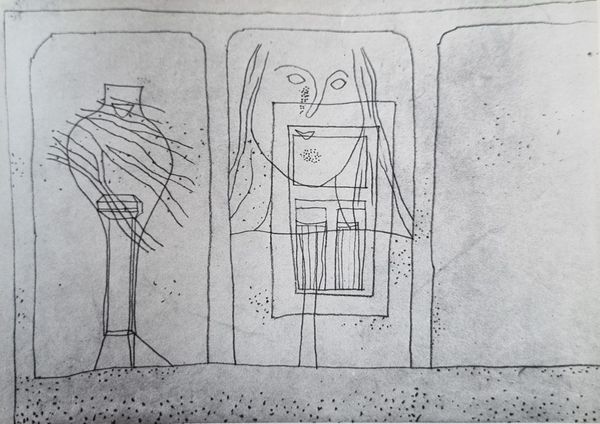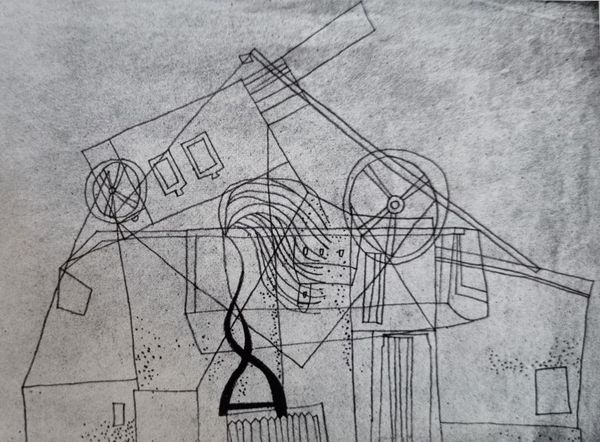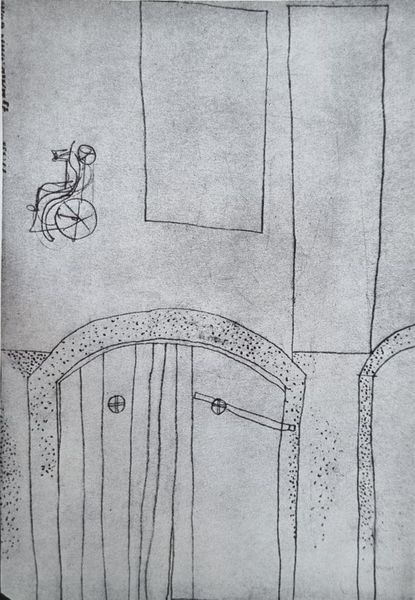
drawing, paper
#
drawing
#
cubism
#
amateur sketch
#
sketched
#
incomplete sketchy
#
hand drawn type
#
landscape
#
paper
#
personal sketchbook
#
fading type
#
geometric
#
rough sketch
#
abstraction
#
sketchbook drawing
#
quick sketch
#
sketchbook art
#
modernism
Copyright: Public domain
Curator: Welcome. The piece before you, "Vajda Lajos Hegyi Falu 1936," is a drawing by the Hungarian artist Vajda Lajos. Though undated in its inscription, it is named after its year, 1936. Its modest composition is rendered in what seems to be pencil on paper, typical of sketches found within personal sketchbooks. Editor: It strikes me immediately as something incomplete, almost like a fading memory or a quickly captured idea. The lines are so spare, just barely defining forms within a washed-out grayscale space. Curator: Indeed. While the term “amateur sketch” could be attributed superficially, in truth, Vajda Lajos' work reveals influences from Cubism, particularly in how the village landscape is abstracted into geometric shapes. However, Vajda brings unique symbolic depth, diverging from typical Cubist structure. Editor: Looking at those stark lines forming houses and… are those meant to be towers? I see something incredibly stark, a landscape stripped of any comfort. There's an undercurrent of anxiety here that really resonates. Curator: That is interesting. Vajda, operating within the social and political context of mid-1930s Hungary, created pieces with specific iconography linked to his cultural background and personal suffering due to growing facism. How might this landscape be seen not just as a geographical space but a representation of social and personal dislocation? Editor: Precisely! By abstracting the village into these almost brutalist forms, the artwork speaks volumes about the fractured experience of marginalized identities facing oppressive regimes. It becomes less about the literal landscape and more about the emotional landscape of the oppressed. The act of creating art like this – almost clandestine, given the times – feels like an act of resistance. Curator: That is one interpretation, among others. Thanks to institutions archiving and making such images available, contemporary dialogue can be inspired even by what appears, initially, to be just an ordinary drawing. Editor: It highlights the crucial intersection between art history and contemporary critical theory in addressing questions of identity and social power. And that dialogue, itself, has transformative power.
Comments
No comments
Be the first to comment and join the conversation on the ultimate creative platform.
